It’s very easy when thinking about digital learning to assume that it’s all virtual, augmented or desktop-based, with the analogue swept aside for 1s and 0s. However we’re strong believers in mixing the two aspects to create truly transformational, immersive learning experiences that physically engage and delight.
From essentially our first deployment to one of our most recent, the studio development team have always loved a challenge to effectively blend physical and digital together for unique purposes and learning outcomes. Here we’ll look at some of those specific projects, highlighting the challenges and outcomes. From construction to nuclear power to farming to simply entertainment, perhaps there’s a learning objective you’re struggling with looking for a hybrid-solution?
We’ve previously written about our experience of deploying immersive technologies to benefit the construction industry, covering some of the same projects but here the focus is bringing real world objects and assets into the virtual training space to enhance learning outcomes.
With BLSC, the training emphasis was focused on the interpersonal relationships onsite and the management juggle of needs and schedules to ensure timely development. The digital aspects were used to immerse and position learners within a realistic environment, matching real world construction sites relevant to the location of the training centre, in this case Melbourne, Australia.
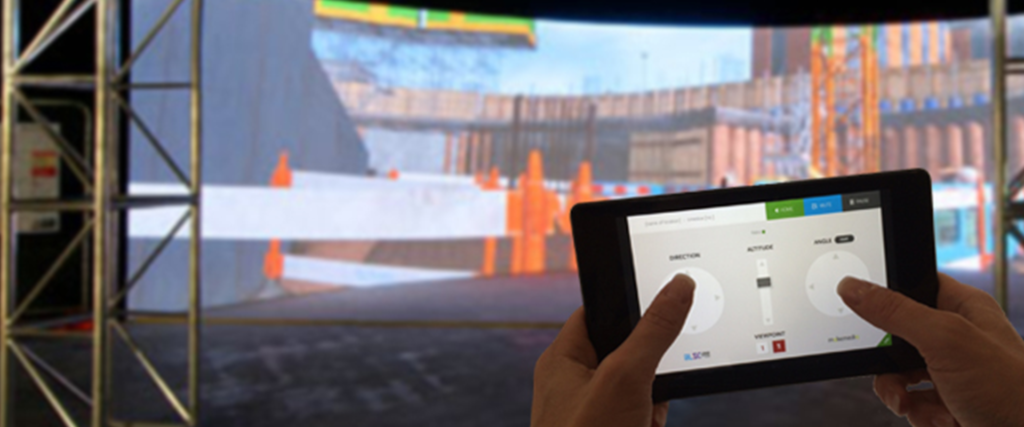
The physical aspects focused around the fully-operational site huts with communication systems replicating those found in the real world, operated by live actors and training facilitators. Other site personnel and construction workers were played by actors to increase the pressure of maintaining operational efficiency, whilst triaging challenges as they were presented.
Another project in partnership with Anticip saw motion platforms incorporated into the deployment to research and study the impact of high winds upon tiers of floors within skyscraper buildings upon workers within. This added physical motion of slight swaying sensations to training to define how visible sightline movement between buildings impacted learning.
We’ve worked with EDF Energy from the early days of the resurgence of Virtual Reality, having deployed over 20 projects since 2014. Whilst many of these are learning & development or training orientated, some have been gamified experiences aimed at younger audiences too. What started out as a multi-user networked tablet serious game for employees of EDF Energy, ‘Reactor Runner’ got turned into a physical arcade cabinet, installed into Glasgow Science Centre and EDF Energy’s own digital centre of learning excellence, Cannington Court.
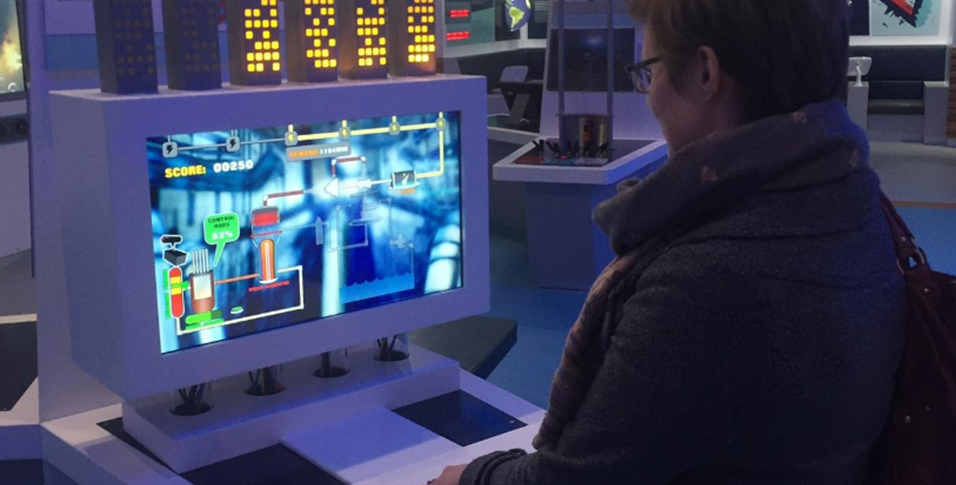
Adapting a touch-input serious game that allows users to play a specific role into a single player, physical installation was a challenge. However a mix of custom input controllers and off-the-shelf knobs, dials, levers and wheels made for a visually appealing yet accurate experience for younger users. Designed for museum installation and heavy, everyday usage has seen the cabinets in operation for 5 years without breakdown or fault so far!
We recently worked again with EDF Energy to create some of the content for the newly opened revamped Hinkley Point Visitor Centre, now found in its new home also at Cannington Court. After a year of lockdown, social distancing and heightened hygiene measures, the design here had to be COVID-safe and contactless for visitors.
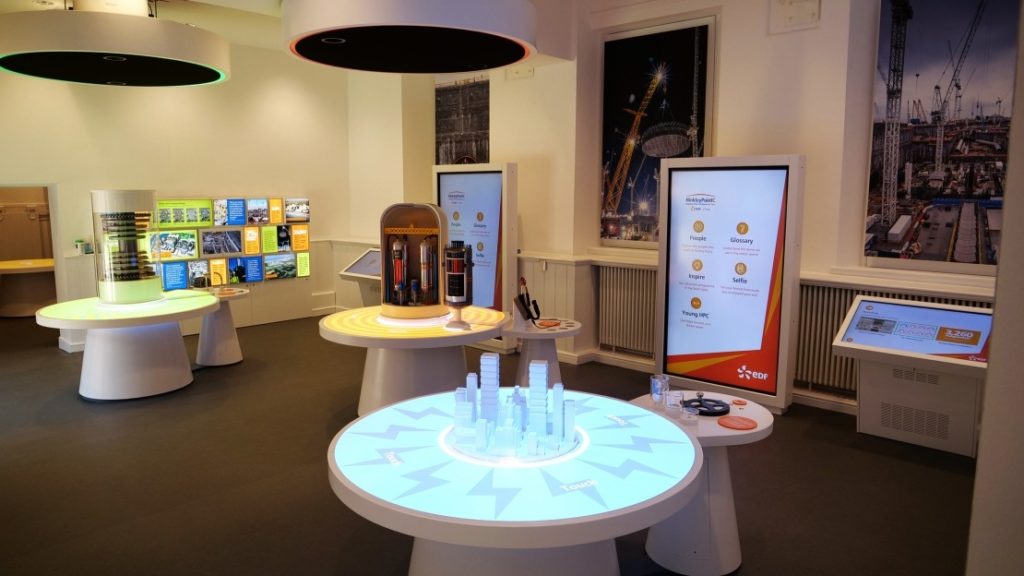
One of our biggest deployments in this area was for McDonald’s UK, as part of their “Follow Our Foodsteps” campaign around encouraging young people to get into farming and agriculture. Designed to extend and enhance a standard distribution truck, we undertook a challenging series of design limitations to create an experience that travelled around the UK for three years, visiting various agricultural and countryside shows.
Whilst we created a series of 360º videos shown on VR headsets and interactive touchscreen content like elsewhere, the hero experience was ‘Top of the Crop‘. Designed as a competitive multiplayer potato harvesting simulation, this challenged show attendees to test their skills at precision tractor driving against the clock, using Oculus Rift VR headsets and Farming Simulator steering wheel and pedals, housed in a mock-up tractor cab.
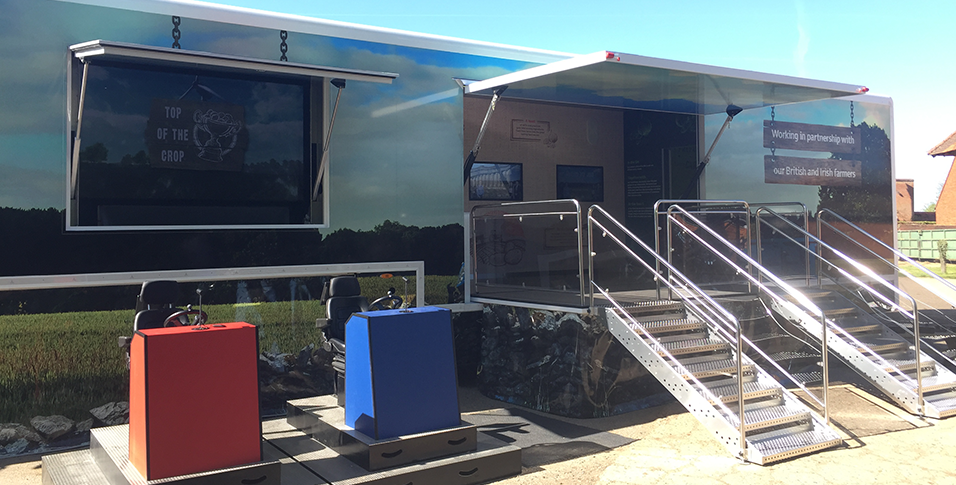
This was a complex build since the mock-up cabinets lived outside the truck but had to be connected to high-end gaming PCs housed inside the truck operations room, running off a generator in some situations, or countryside show electrical supplies. Not only that, but it all had to be easy to operate by one person, and a small events team to set it up each morning and break it down at the end of each day for safe storage inside the truck overnight.
Another project that saw us deploying into a museum space incorporated AR, networked devices and a collection of physical objects was TEQ4 / Kravis Discovery Centre. Having built an earlier prototype concept of how the system would work, we created a full exhibit space installation experience for the Gilcrease Museum in Tulsa, Oklahoma. Incorporating a high number of tablet devices designed for school group simultaneous use, a grouping and navigation system guided visitors around the space. Based upon their tracking position and known numbers of users at each exhibit, the system would re-route and divert groups accordingly to avoid bottlenecks.

The exhibits themselves incorporated a range of 3D-printed assets, video and audio media projected or screen-based and drawers of original items, all tracked within the space and tablets being location-aware to trigger events and effects accordingly.
Our most recent deployment draws upon everything we have learned over the years for physical installations, combining projectors, tracking, networks and a high fun factor, all wrapped into a operationally stable and robust offering.
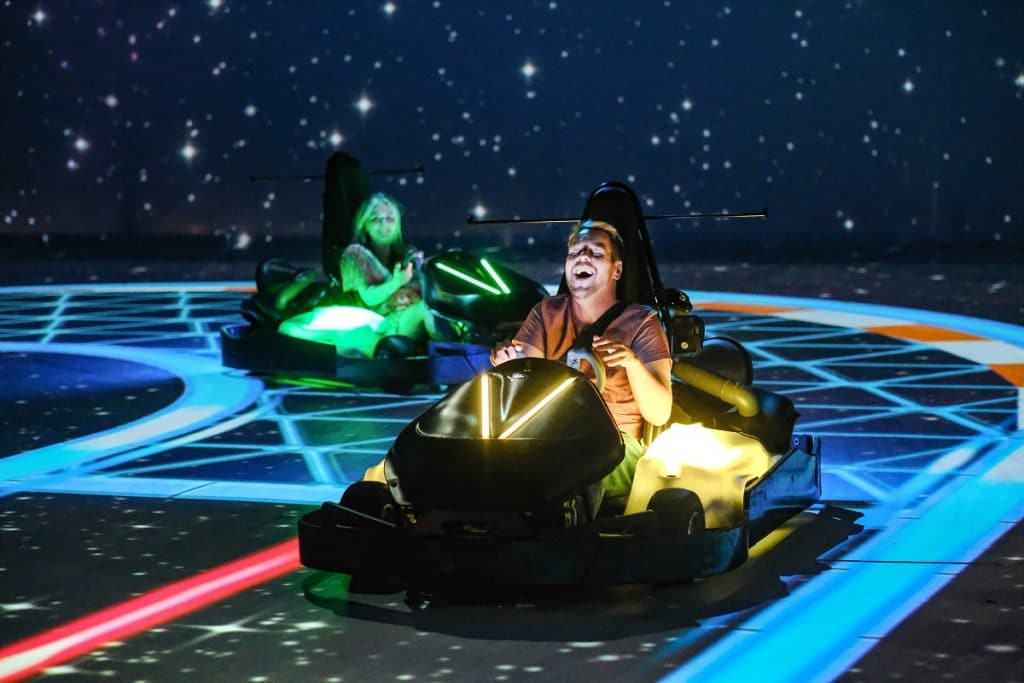
This installation required the team to design the gameplay, levels and fun factor as we have done elsewhere. However the real challenge was tying the tech stack together to create a flawless system that is easy to operate, robust and incorporates a number of platforms. From networked electric go-kart positional tracking, to location motion control, to linking the booking system to the in-kart displays, to aligning the multi-projection system to the positioning, pickups, speed boosts, slow-downs and weapons deployed against other go-karts, there’s a considerable amount going on here.
Blending the analogue, digital and physical creates more touch points and involves more senses during immersive experiences, creating deeper engagement for users whilst leaving a longer lasting impression overall. Other projects we have created not covered here blend the Augmented and Virtual Realities whilst offering asymmetrical interactions between differing devices to accommodate further user preference or enable greater deployment scale. These may seem extravagant or challenging projects to create and complete but the overwhelming positive feedback, user retention and replayability shows ultimately, going that bit extra further is wholly worth it.
We’re always happy to talk to you about how immersive technologies can engage your employees and customers. If you have a learning objective in mind, or simply want to know more about emerging technologies like VR, AR, or AI, send us a message and we’ll get back to you as soon as we can.